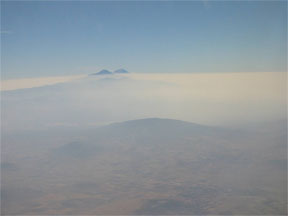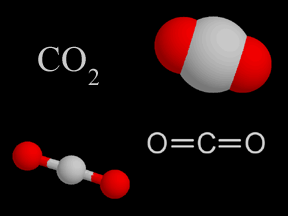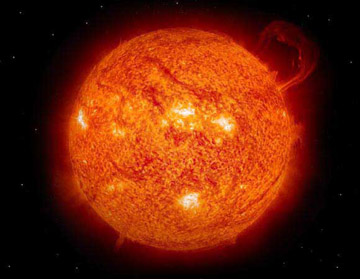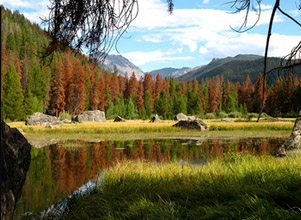Pine bark beetles are munching pine trees throughout the Rocky Mountains. Trees that have been killed because of pine bark beetles have brown needles in this picture. Less pine trees in this area may have an impact on weather and air quality.
Click on image for full size
Carlye Calvin / UCAR
Can Dying Trees Change Weather and Climate?
News story originally written on September 24, 2008
In the forests of the southern Rocky Mountains, trees are being killed by beetles that eat bark. Scientists are looking at forests where the beetles are eating the trees. They want to understand how trees affect weather, air pollution, and climate change.
Each little beetle is only the size of a grain of rice. But just because these beetles are small, doesn't mean they are not important. There are more beetles in these forests now than there were a few years ago. And many of them can eat a lot of bark. Together, millions of beetles kill huge forest trees.
"Forests help control the atmosphere," says scientist Alex Guenther. He says that there is a big difference between the way living forests and dead forests control the atmosphere. Scientists think that weather and air quality may be changing as trees die because of the beetles. Forest trees send water vapor, other gases, and little particles into the air. These gases and particles may be tiny but they can have a big impact on the atmosphere.
Using instruments on airplanes, instruments on the ground, and computer models, scientists will study the atmosphere and the forests.
Climate can be affected too. Temperature in the area could get warmer as trees die. This is because the dead trees send the greenhouse gas carbon dioxide (CO2), into the air. Also affecting climate, the dead trees do not reflect as much of the Sun's heat back into space, holding more heat close to the Earth.
You might also be interested in:

Have you ever heard of air pollution? Air pollution is not new. 700 years ago, when people started burning large amounts of coal 700 years ago in London, England, they complained about the dust and soot
...more
When you look up at the sky, you are looking at more than just air. There are also billions of tiny bits of solid and liquid floating in the air. These tiny particles are called aerosols or particulates.
...more
Only a tiny amount of the gases in Earth’s atmosphere are greenhouse gases. But they have a huge effect on climate. There are several different types of greenhouse gases, but they all have something in
...more
Carbon dioxide (CO2) is a kind of gas. There isn't that much carbon dioxide in Earth's atmosphere, but it is still very important. Carbon dioxide is a greenhouse gas. That means it helps trap heat coming
...more
The Sun Climate can change if there is a change in the amount of solar energy that gets to Earth. A change in the solar cycle can impact climate. The effect is too small to be the reason that global warming
...more
There are many different kinds of plants. Some have big leaves. Some have small leaves. Some even have flowers. All plants make their own food. When sunlight hits the leaves of a plant, photosynthesis
...more
Scientists have learned that Mount Hood, Oregon's tallest mountain, has erupted in the past due to the mixing of two different types of magma. Adam Kent, a geologist at Oregon State University, says this
...more















